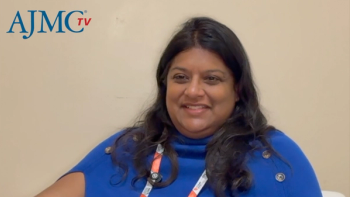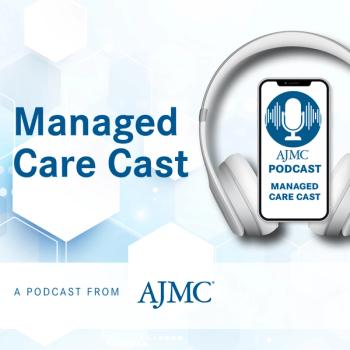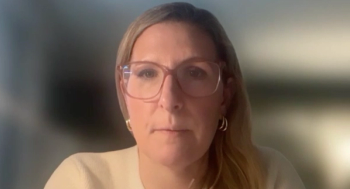
Weight Regain After GLP-1 Discontinuation is Less Rapid in Real World: Hamlet Gasoyan, PhD

In a Cleveland Clinic cohort, patients who stopped treatment for obesity had smaller weight losses to start, making these gains easier to maintain, explained Hamlet Gasoyan, PhD.
Captions were auto-generated.
In real-world settings, patients who stop taking glucagon-like peptide-1 (GLP-1) receptor agonists to
Continuing the conversation around
“There have been 2 major clinical trials where either semaglutide was stopped or tirzepatide was stopped, and in both trials, patients did regain most of their weight that they lost during the leading period,” he explained, citing the STEP 1 (NCT03548935) and SURMOUNT-4 (NCT04660643) trials.2,3 Meanwhile, real-world data showed more stable weight trajectories.1
Gasoyan offered 2 main reasons for this discrepancy. First, patients in trials typically lose more weight due to longer treatment duration, so discontinuation leads to a sharper rebound. In the Cleveland Clinic cohort, patients who discontinued therapy had smaller weight losses to begin with, making it easier to maintain. Second, unlike trials where treatment is abruptly withdrawn, patients in real-world care often continue to pursue weight management through other means. This could include switching to older antiobesity medications, pausing and resuming GLP-1 therapy later, or engaging in lifestyle-based approaches like diet changes.
“Even after discontinuation of GLP-1s for 3 months or so, patients’ journeys in treating their obesity does not stop, which is an encouraging thing to us, and also gives us a task to produce evidence-based recommendations for them in terms of what's next,” Gasoyan told AJMC.
References
- Klein HE. Real-world use of GLP-1s yields less weight loss than clinical trials. AJMC®. June 10, 2025. Accessed June 16, 2025.
https://www.ajmc.com/view/real-world-use-of-glp-1s-yields-less-weight-loss-than-clinical-trials - Wilding JPH, Batterham RL, Davies M, et al. Weight regain and cardiometabolic effects after withdrawal of semaglutide: the STEP 1 trial extension. Diabetes Obes Metab. 2022;24(8):1553-1564. doi:10.1111/dom.14725
- Aronne LJ, Sattar N, Horn DB, et al. Continued treatment with tirzepatide for maintenance of weight reduction in adults with obesity: the SURMOUNT-4 randomized clinical trial. JAMA. 2024;331(1):38-48. doi:10.1001/jama.2023.24945
Newsletter
Stay ahead of policy, cost, and value—subscribe to AJMC for expert insights at the intersection of clinical care and health economics.













































